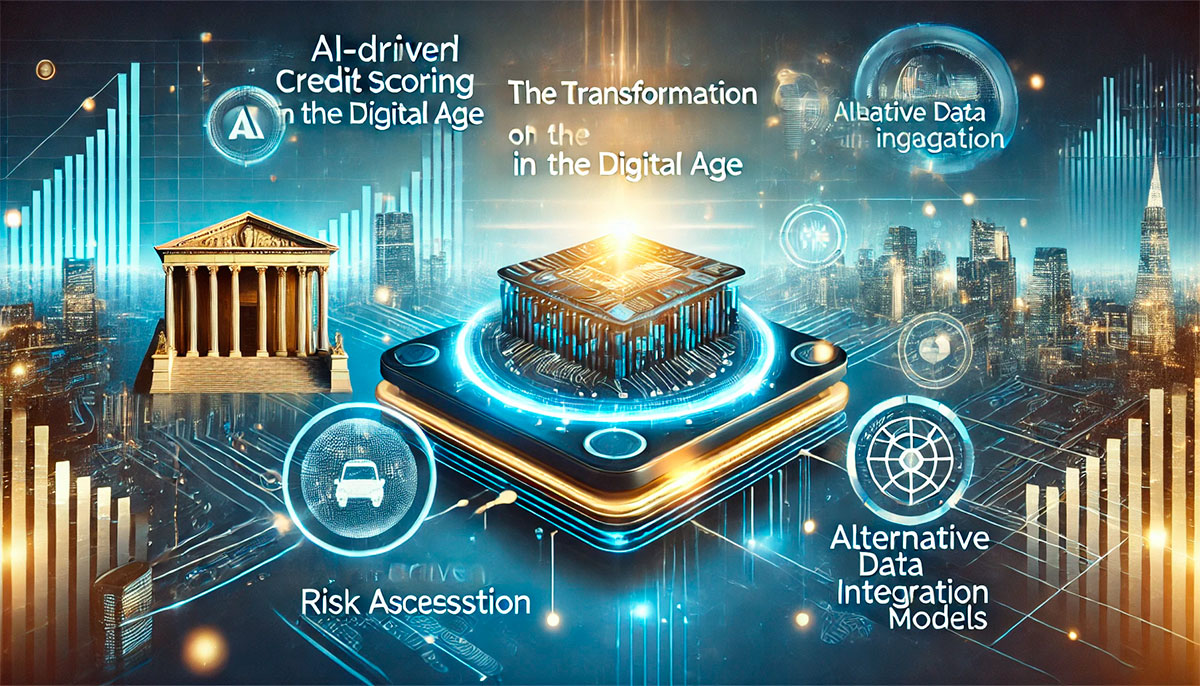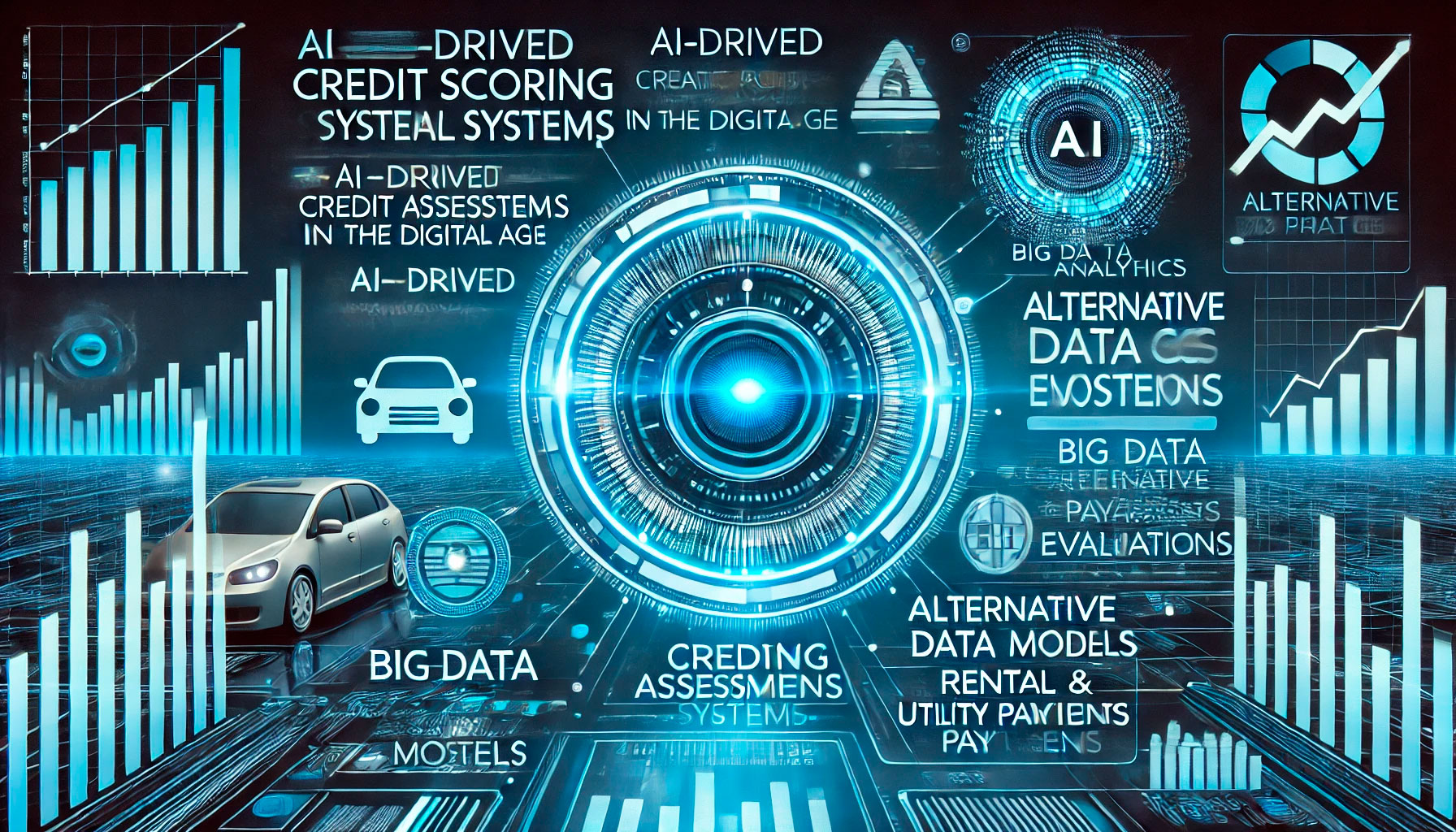Credit scoring systems have long been the backbone of lending decisions, providing a standardized method for financial institutions to assess the creditworthiness of borrowers. However, as the world becomes increasingly digital and interconnected, these systems are undergoing significant transformations. The rise of big data, artificial intelligence, and alternative data sources has pushed credit scoring into a new era, where traditional methods are evolving to accommodate modern technological advancements. This article explores the evolution of credit scoring systems in the digital age, highlighting the key changes, challenges, and opportunities that are reshaping the landscape of credit assessment.
The Traditional Credit Scoring System
Historically, credit scoring has been based on a set of well-established factors, such as an individual’s payment history, outstanding debt, length of credit history, types of credit used, and recent credit inquiries. These factors are combined into a numerical score, with higher scores indicating lower risk for lenders. The most widely used credit scoring model in the United States, the FICO score, is based on these factors, and similar models are used in other countries as well.
While traditional credit scoring systems have provided a reliable framework for assessing creditworthiness, they have certain limitations. They often rely on a limited set of data, which can leave certain individuals—particularly those with limited or no credit history—at a disadvantage. Furthermore, traditional credit scores fail to account for the financial behavior of individuals who do not have access to mainstream credit products. This has led to the development of alternative credit scoring models that aim to provide a more inclusive and accurate assessment of a borrower’s creditworthiness.
The Rise of Alternative Data
One of the most significant changes in credit scoring systems in the digital age has been the integration of alternative data sources. Alternative data refers to any information that is not typically included in traditional credit reports but can still provide valuable insights into a borrower’s financial behavior. This can include utility payments, rental history, mobile phone bills, and even social media activity. The use of alternative data allows for a more comprehensive view of a borrower’s financial health, especially for those who may not have a traditional credit history.
By incorporating alternative data, lenders can assess creditworthiness more accurately, particularly for individuals who are considered “credit invisible” under traditional scoring models. For example, a person who has never taken out a loan or used a credit card may still be able to demonstrate a history of on-time rent payments and utility bills. This data could help them qualify for a loan that they might have been denied under a traditional credit scoring system. The inclusion of alternative data is one of the most exciting developments in the evolution of credit scoring, as it allows more people to access credit and financial services.
The Role of Big Data and Machine Learning
Big data and machine learning are at the forefront of the digital transformation of credit scoring. With the advent of these technologies, lenders are now able to analyze vast amounts of data—much more than what could have been processed using traditional methods. By leveraging machine learning algorithms, financial institutions can identify patterns and correlations within this data that human analysts may miss. These patterns can be used to predict a borrower’s likelihood of default with a much higher degree of accuracy than traditional credit scores.
Machine learning models can continuously evolve and improve over time, adapting to new data as it becomes available. This dynamic nature allows credit scoring systems to become more refined and precise, reducing the risk of default while improving the borrower’s experience. By incorporating more diverse and up-to-date data sources, machine learning models can create highly personalized credit profiles, enabling lenders to offer better terms and more accurate assessments of creditworthiness. These advancements have the potential to make credit scoring more inclusive and effective for a wide range of borrowers.

The Impact of Digital Platforms and Fintech Companies
The rise of digital platforms and fintech companies has also played a significant role in the evolution of credit scoring systems. These companies are challenging traditional financial institutions by offering innovative, tech-driven alternatives to traditional banking services, including credit assessments. Many fintech companies have developed their own credit scoring models that rely on alternative data sources, machine learning, and real-time analytics to provide instant lending decisions.
Fintech companies often use non-traditional data, such as a borrower’s spending habits, transaction history, and even their social media presence, to assess credit risk. By doing so, they are able to offer more flexible and accessible credit products to underserved populations, such as younger consumers, freelancers, or people without a formal credit history. These new methods of credit scoring are helping to expand access to credit, especially for those who have been historically excluded from traditional financial systems.
The Benefits of Modernized Credit Scoring Systems
The evolution of credit scoring systems in the digital age has brought a number of key benefits:
- Increased financial inclusion: Modernized credit scoring models, which incorporate alternative data and machine learning, have opened up access to credit for individuals who were previously considered “credit invisible” by traditional methods.
- Improved accuracy: The use of big data and machine learning allows for more accurate predictions of credit risk, reducing the likelihood of lenders approving high-risk borrowers while also offering better terms for low-risk borrowers.
- Faster lending decisions: With the use of digital platforms and real-time data analysis, lending decisions can be made almost instantaneously, speeding up the approval process and providing a more seamless borrowing experience.
- Personalized credit products: AI-powered credit scoring models can create tailored credit offerings based on an individual borrower’s unique financial behavior and risk profile, helping to improve the lending experience for both lenders and borrowers.
- More comprehensive risk assessments: The inclusion of alternative data and the ability to process large amounts of information provides a more holistic view of a borrower’s financial situation, leading to more informed and fair lending decisions.
Challenges and Concerns in the Digital Age
Despite the many advantages of modernized credit scoring systems, there are also several challenges and concerns that need to be addressed. One of the primary concerns is data privacy and security. With the increasing reliance on alternative data sources, there is a risk that sensitive personal information could be misused or compromised. Ensuring that robust data protection measures are in place is critical to maintaining the trust of consumers and ensuring compliance with privacy regulations.
Another challenge is the potential for algorithmic bias in machine learning models. If the data used to train these models is biased, the resulting credit assessments could also be biased, leading to unfair lending practices. Financial institutions must ensure that their algorithms are transparent, explainable, and regularly audited to prevent discrimination and ensure fairness in lending decisions.
Conclusion: The Future of Credit Scoring
In conclusion, the evolution of credit scoring systems in the digital age represents a major shift toward more inclusive, accurate, and efficient lending practices. By leveraging alternative data, big data, machine learning, and digital platforms, lenders are now able to make more informed credit decisions and offer personalized financial products to a broader range of borrowers. While challenges related to data privacy and bias remain, the future of credit scoring holds tremendous potential for creating a more equitable financial system. As technology continues to evolve, so too will the methods for assessing credit risk, ultimately improving access to credit and financial services for all.

